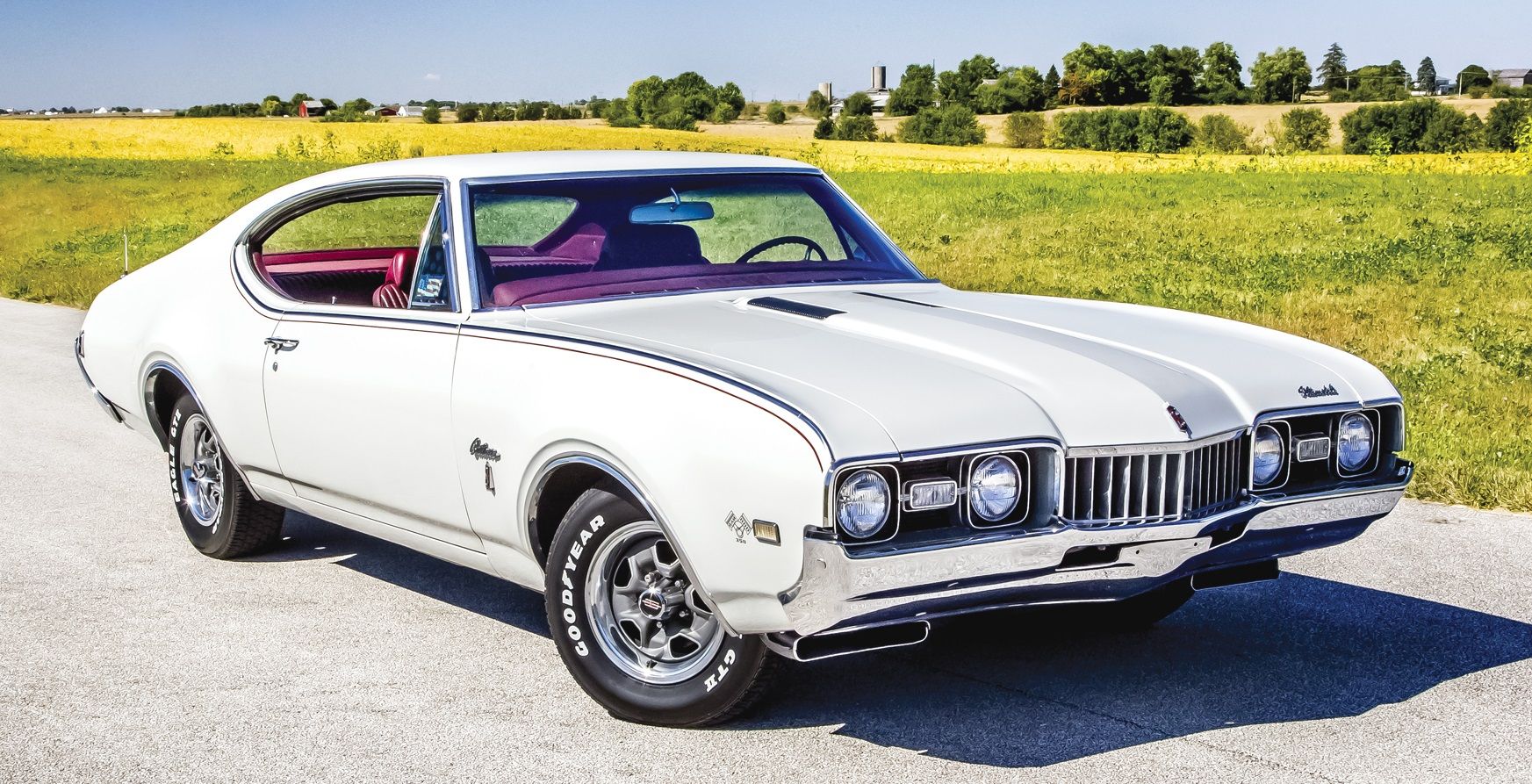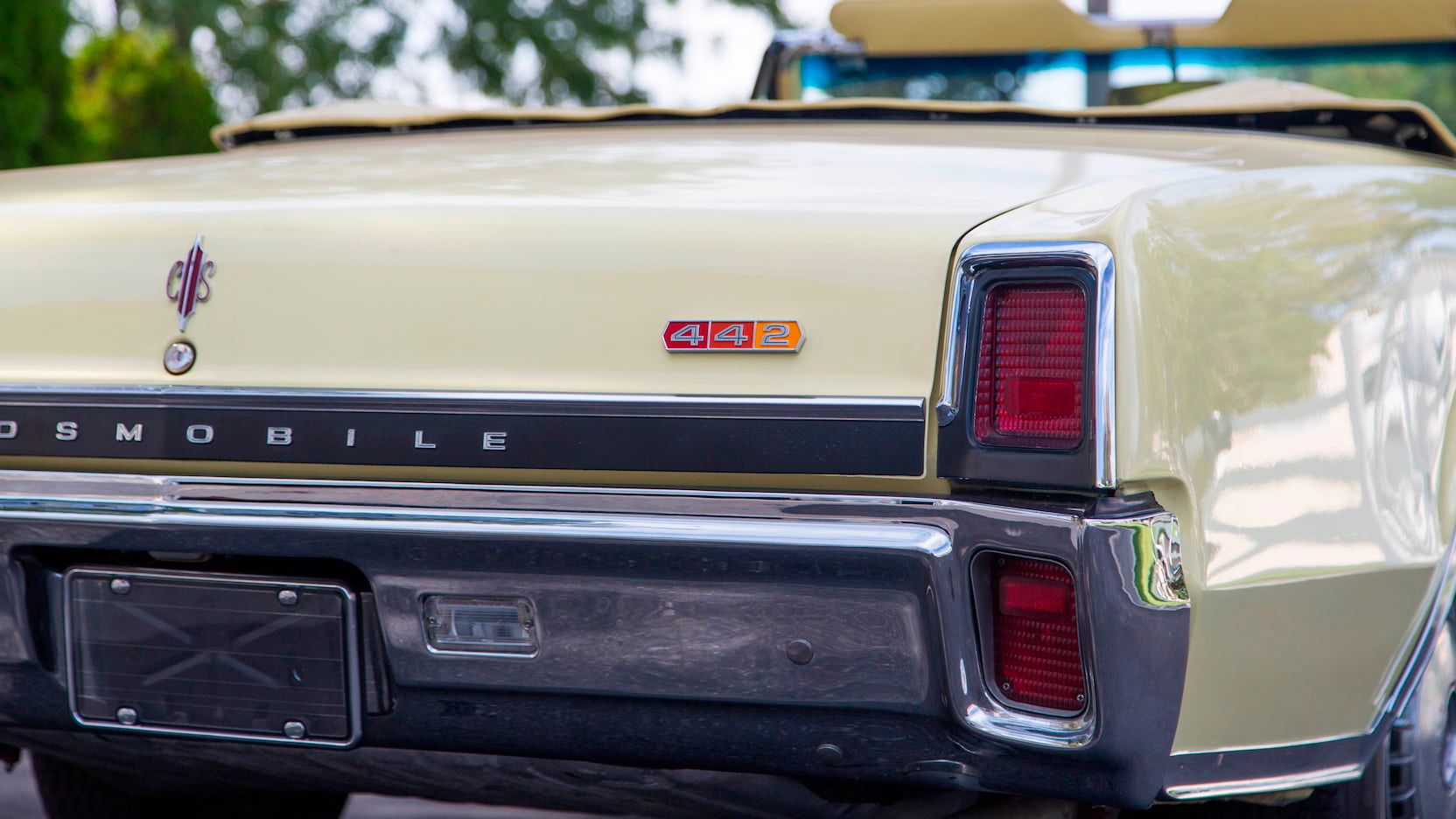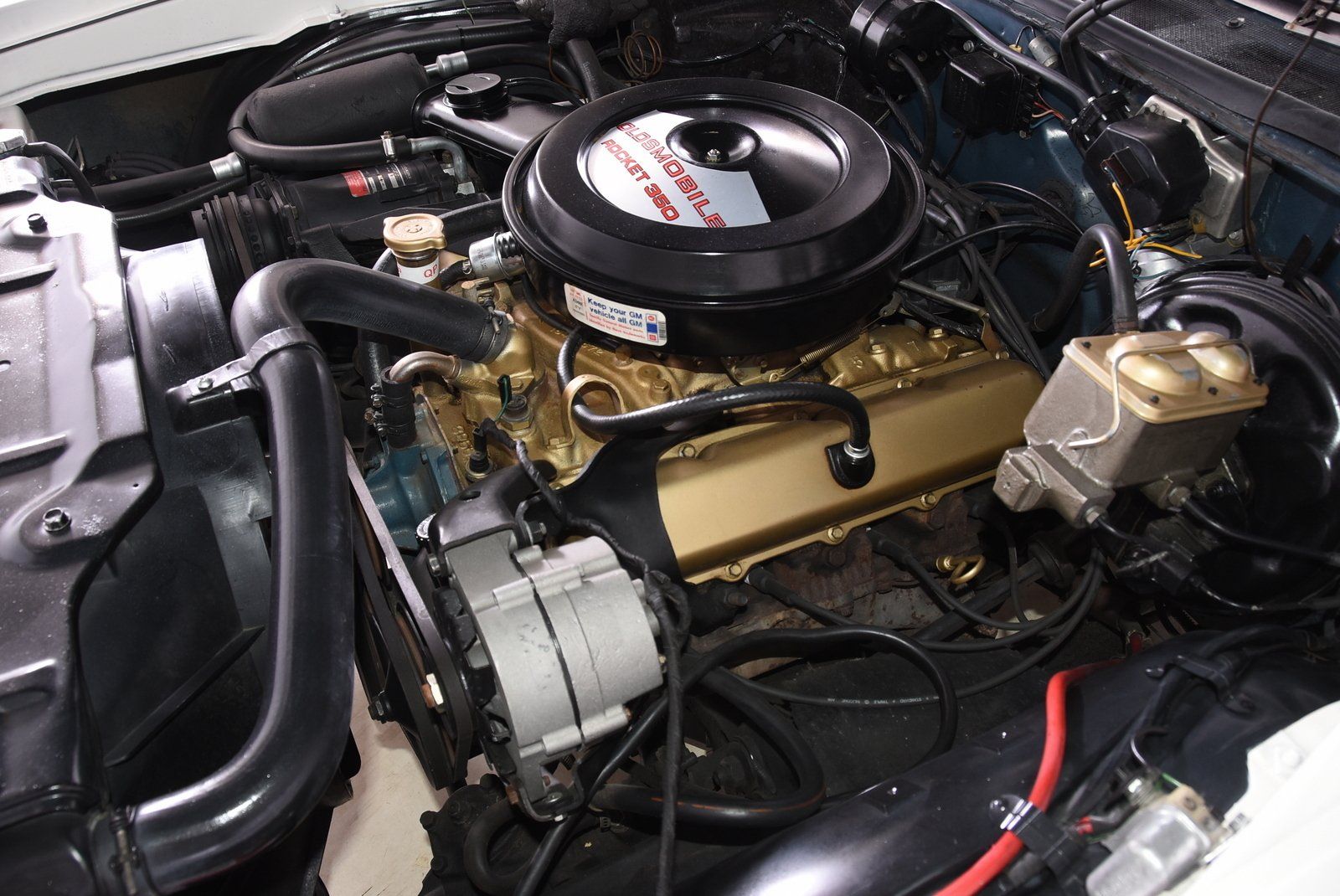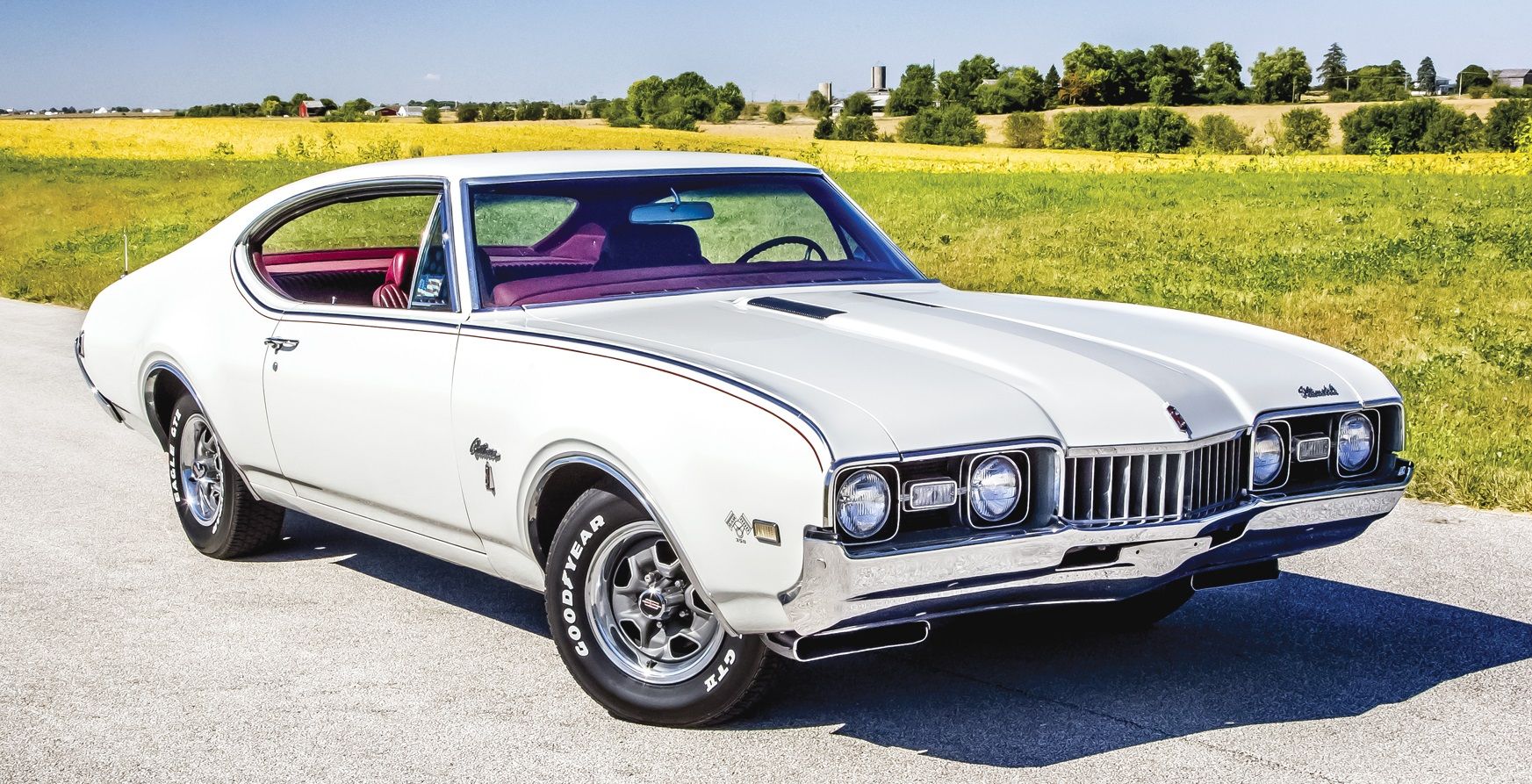What car company comes to mind when someone says the words "muscle car?" Our money would be on Pontiac or maybe Plymouth. And one wouldn't be wrong - these two manufacturers were among the inventors of the muscle car format - an affordable, basic, yet potent coupe. Realistically speaking, all American car manufacturers made their interpretations of a muscle car at some point - some, like the second-gen Dodge Charger, are simply remembered better.
But what happened to the ones that got away? Logically enough, most of these forgotten muscle cars come from car companies that have since ceased to exist - Plymouth, Pontiac, and the company in question - Oldsmobile. To this day, we and all other muscle car enthusiasts mourn the demise of these once-great manufacturers, especially Oldsmobile. Back in the day, this entry-level luxury brand was GM's golden child that showcased the latest car technology and inventions. We won't include the entire list of the Oldsmobile firsts here because it would be too long. But to give you an idea, their innovations range from the first fully automatic transmission, the Hydra-Matic, to the first production turbocharged engine in the F-85 Jetfire.
As their impressive portfolio suggests, the Oldsmobile name has always been more associated with luxury and tech rather than with performance. The only true to its definition muscle car from Oldsmobile that is still remembered today is the 4-4-2 - and its history is not exactly thrilling. However, Oldsmobile did have another ace up their sleeve that could certainly keep up with its muscle car competitors - we're talking about the Cutlass nameplate, of course.
But could the Cutlass qualify as a muscle car? The topic still raises heated debates in the Olds community - and there is hardly a right or wrong answer. Let's find out!
Keeping Up With The Names
Unless you're a true fan of older American cars, it might be hard to distinguish between all the Oldsmobile models that we've mentioned so far. Hence, before digging into the question of whether the Cutlass is a worthy muscle car, we will take a trip back to the 1960s and explore the history of the model. Because there is a lot to explore.
The Cutlass first arrived on the scene in 1961 as the Oldsmobile F-85 - quite an uninspiring name, if you ask us. Despite the name, however, it had a critical mission - to carve out a piece of the compact car market for GM together with the Chevrolet Corvair. And in true Oldsmobile fashion, it featured the newest engineering that GM could offer - namely, the Y-body platform. We won't get into the specifics, but let us just say that it was quite innovative due to its lightweight unibody construction and an all-aluminum V8.
Now, at the time, the Cutlass was nothing more than a sporty package for the F-85. But at least it was not sporty in name only. The higher compression ratio in the 215 cu in Rockette V8 pushed the power output to a healthy 185 hp, and the bucket seats made sure that you stayed in place while attacking those corners.
For whatever reason, the unibody layout didn't work very well for the F-85. The second generation moved onto the trusted body-on-frame A-body platform in 1964 - now becoming a mid-size car. In the same year, the 4-4-2 nameplate was born - once again, a trim level that was intended to compete with the Pontiac GTO. The 4-4-2 name comes from the four-barrel carburetor, four-speed manual transmission, and dual exhaust that defined the package.
The 4-4-2 became a standalone model in 1968 when the third generation of the F-85 came out. The third-gen also became the first one to offer the upscale Cutlass Supreme trim level as we know it - a luxurious, top-of-the-line coupe. Many enthusiasts out there believe that the third generation was the pinnacle of the Cutlass in terms of style and performance. This might be a topic of discussion, of course, but it's hard to deny that the third-gen definitely shaped the lineup of the model for years to come.
And defining the lineup is essential to answering the main question of this article. To find out whether the Cutlass was a worthy muscle car, we should make sure that we know what Cutlass exactly we're talking about. And for the purposes of this article, we'll be talking specifically about the Cutlass and the Cutlass Supreme - not the base-level F-85 model or the high-performance 4-4-2, which was a worthy muscle car in its own right. So, let's look at some numbers.
Specs And Details
Allow us to explain why we want to explore the Cutlass and its luxurious Supreme cousin in greater detail. Sure, the entire F-85 model was colloquially known as the Cutlass, and the 4-4-2 model was, mechanically speaking, a faster F-85. But all these nameplates were treated as separate cars both by Oldsmobile's marketing department and by the buyers, just like they are treated now by the enthusiasts. And while nobody really questions whether the 4-4-2 was a bonafide muscle car - successful or not, the defining the Cutlass is trickier. Is it a muscle car? Is it a personal luxury car? Is it just yet another intermediate?
Once again, the textbook definition of a muscle car can be summarized as follows: an affordable mid-size RWD coupe with a large, powerful V8 engine, often sourced from a full-size car.
Let's break the Cutlass down point by point. Throughout its production run, it was offered with two doors - whether as a fastback, a hardtop, or a normal coupe. Similarly, it had stayed true to the front-engine, rear-wheel-drive format - for the most part. It was also affordable - the 1970 Cutlass S model had a base MSRP of around $3,000 (around $20,000 adjusted for inflation), which was similar to the Plymouth Baracuda or the Pontiac GTO from the same year. The luxurious Cutlass Supreme, on the other hand, was roughly $500 more expensive, so it doesn't exactly check the affordability box. And indeed, it was considered more of a personal luxury car at the time.
Moving onto the final, most important and the most fun criterion - engines and power figures. In most generations of the Cutlass, the engine choices ranged from 250 cu in inline-sixes to 350 cu in V8s, while everything larger than 400 cu in was reserved exclusively for the 4-4-2. In fact, at a certain point in the production, the meaning of the number 4 in the name changed from "4-barrel carb" to simply "400 cu in" of displacement. But the smaller 350 and 330 cu in V8s were not far behind their larger brothers. In 1969, you could equip your 350 cu in Cutlass with the W-31 option, which raised the total number of carburetors to four and added a ram air intake, increasing the total power output to the 325 hp - on paper, at least. In this spec, the Cutlass could definitely keep up with the muscle car big boys, such as the 383 cu in Dodge Super Bee or the 400 cu in Pontiac GTO.
The Verdict
Yes, this is the moment you've all been waiting for while reading the rather lengthy explanation of the facts and numbers above. Taking all of them into consideration, is the Oldsmobile Cutlass a worthy muscle car?
In our opinion, yes and no.
Realistically, the answer depends on one's individual perception of a muscle car. The purists among us would probably compare the specs and history of the Cutlass against the textbook definition of a muscle car - only to find out that the Cutlass is not one. Apart from the 4-4-2 version, the Cutlass was, after all, a bit too slow and a bit too luxurious to be a true stripped-down, dirt cheap, drag strip-ready performance machine. Not that it was slow or anything - there were simply other cars that fit the profile of the old school American muscle more than the Cutlass - including Oldsmobile's own 4-4-2.
On the other hand, who really cares about exact engine displacements and window stickers? True muscle cars were not about spec sheets. They were about the ownership experience, the driving experience, the exhaust note - smiles per gallon if you wish. And the Cutlass excelled here. All in all, it was still a gorgeous, fast car that was way ahead of its competition in many regards due to all the innovations that GM had stuffed into it. And if it's okay for some people to refer to pony cars as a muscle car, we don't see any problem with calling the Cutlass a muscle car, either.
As long as you're not referring to the '82 Cutlass Ciera, of course.




